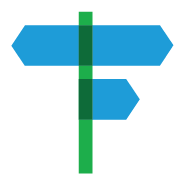The demand for remote interviews soared in recent years. Besides, recruiting talent, globally or locally, has never been easier than it is now via virtual interview platforms. Using top-of-the-line HR technology tools, besides remotely interviewing prospective candidates, can also aid in conducting pre-employment assessments to gauge candidates’ skills and job fitment.
Modern interview platforms have enabled organizations to expedite conducting interviews at scale across geographic boundaries. But more feature-intensive interview platforms such as Mercer|Mettl can take the online interview experience to another level.
Recruiters can use these next-gen video interview tools to predict on-the-job performance better using collaborative tools, such as competency-based assessments, coding simulators, etc. In addition, candidates can take skills tests and interviews in conjunction, with answers being assessed by AI to provide predictive analytics. The availability of interview questions in multiple formats, such as MCQ, video, etc., also brings an element of interactivity and variety to the hiring process.

Noteworthy features:
Structured interviews: Base interviews on a set of predefined competencies mapped to the job
Faster hiring and easy scheduling: A better time-to-hire metric with time-efficient screening
Data-driven hiring: The video responses of candidates to standardized interview questions are easy to be reviewed and graded by the hiring managers at their convenience
Anti-cheating measures: Uncompromisable security with ready-to-use proctoring features that ensure applicants do not cheat during interviews
Comprehensive individual and group reports: Feedback and ratings for all participants are cogently presented in a consolidated dashboard
Holistic skills assessments: Competency-based questions that help interviewers to ask the right questions









 Behavioral Competencies
Behavioral Competencies Cognitive Competencies
Cognitive Competencies Coding Competencies
Coding Competencies Domain Competencies
Domain Competencies




































Would you like to comment?